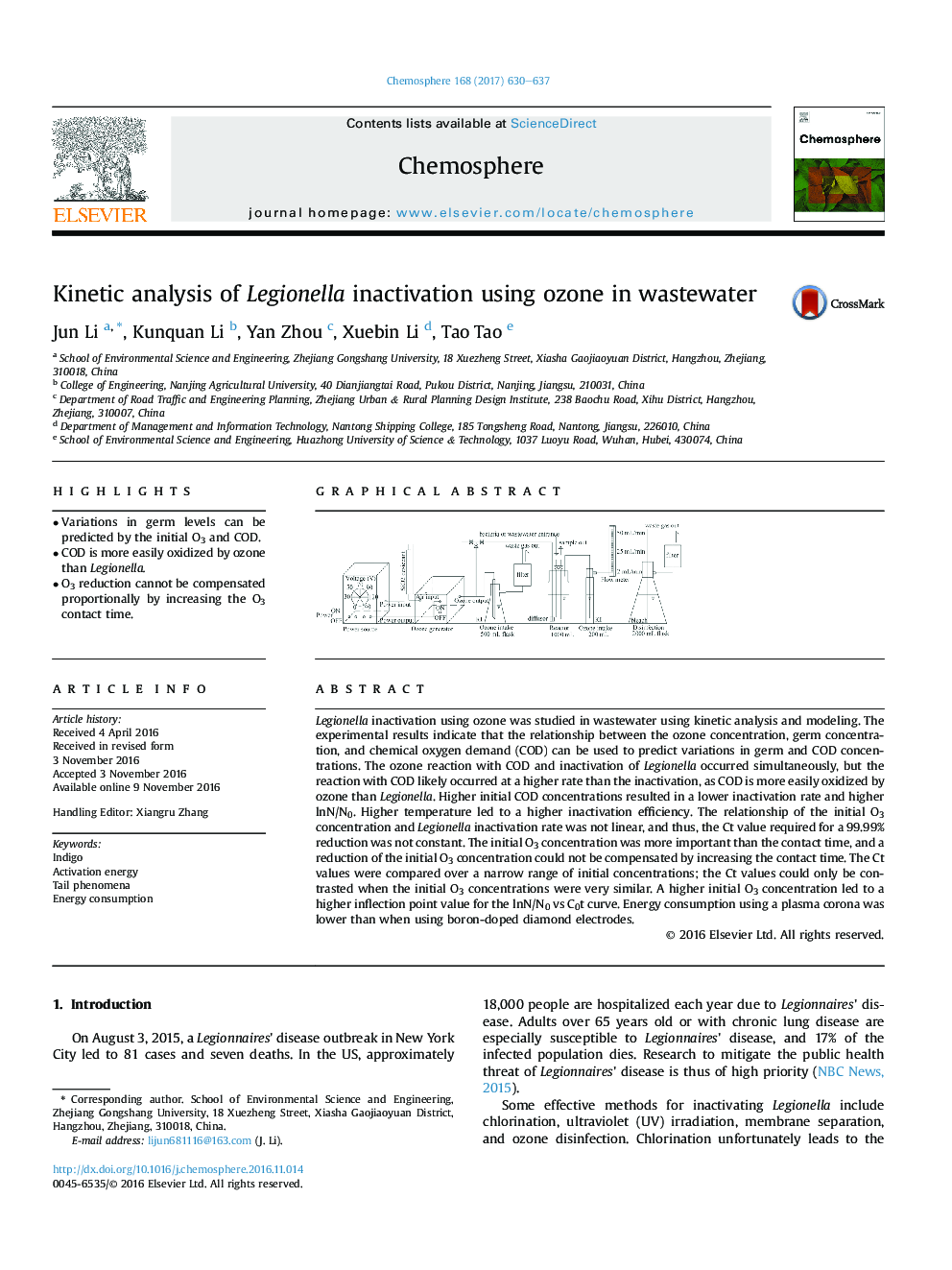| کد مقاله | کد نشریه | سال انتشار | مقاله انگلیسی | نسخه تمام متن |
|---|---|---|---|---|
| 5746672 | 1618803 | 2017 | 8 صفحه PDF | دانلود رایگان |
- Variations in germ levels can be predicted by the initial O3 and COD.
- COD is more easily oxidized by ozone than Legionella.
- O3 reduction cannot be compensated proportionally by increasing the O3 contact time.
Legionella inactivation using ozone was studied in wastewater using kinetic analysis and modeling. The experimental results indicate that the relationship between the ozone concentration, germ concentration, and chemical oxygen demand (COD) can be used to predict variations in germ and COD concentrations. The ozone reaction with COD and inactivation of Legionella occurred simultaneously, but the reaction with COD likely occurred at a higher rate than the inactivation, as COD is more easily oxidized by ozone than Legionella. Higher initial COD concentrations resulted in a lower inactivation rate and higher lnN/N0. Higher temperature led to a higher inactivation efficiency. The relationship of the initial O3 concentration and Legionella inactivation rate was not linear, and thus, the Ct value required for a 99.99% reduction was not constant. The initial O3 concentration was more important than the contact time, and a reduction of the initial O3 concentration could not be compensated by increasing the contact time. The Ct values were compared over a narrow range of initial concentrations; the Ct values could only be contrasted when the initial O3 concentrations were very similar. A higher initial O3 concentration led to a higher inflection point value for the lnN/N0 vs C0t curve. Energy consumption using a plasma corona was lower than when using boron-doped diamond electrodes.
172
Journal: Chemosphere - Volume 168, February 2017, Pages 630-637
